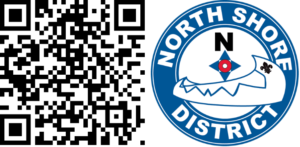As early as 1911, Ernest Thompson Seton had developed a prototype program he named Cub Scouts of America that was never implemented. James E. West felt that having BSA divisions for younger boys (those under 12; the “younger boy problem”) would draw away boys from the core program, which was Scout troops focused on the 12- to 17-year-old age group; thus he opposed such a program for some time. In spite of this, unofficial programs for younger boys started around this time, under names such as Junior Troops or Cadet Corps. The BSA obtained the rights to Lord Baden-Powell‘s The Wolf Cub’s Handbook in 1916 and used it in unofficial Wolf Cub programs starting in 1918. This led to an issue with Daniel Carter Beard who felt that the use of the British book was nearly disloyal to the United States of America. West encouraged the formation of the Boy Rangers of America, a separate organization for boys eight through twelve based on an American Indian theme. The Boy Rangers used the Scout Law and their Chief Guide, Emerson Brooks, was a Boy Scout commissioner in Montclair, New Jersey. The BSA finally began some experimental Cub units in 1928 and in 1930 the BSA began registering the first Cub Scout packs, and the Boy Rangers were absorbed.
Stay informed! Subscribe to the
North Shore District Newsletter
Quick Links
Upcoming Events
May
2
Thu
7:00 pm
District Committee Meeting
@ Good News United Methodist Church w/Hybrid Zoom
District Committee Meeting
@ Good News United Methodist Church w/Hybrid Zoom
May 2 @ 7:00 pm – 8:00 pm
What: North Shore District Committee Meeting Time: First Thursday, every month 7:00 PM Central Time (US and Canada) Please plan to attend in person. In Person – 1610 E New Hope Dr, Leander, TX 78641[...]
May
9
Thu
7:00 pm
OA Chapter meeting
@ Good News United Methodist Church
OA Chapter meeting
@ Good News United Methodist Church
May 9 @ 7:00 pm – 8:00 pm
Monthly Chapter meeting.
7:00 pm
Roundtable
@ Good News UMC
Roundtable
@ Good News UMC
May 9 @ 7:00 pm – 8:30 pm
Monthly Roundtable meeting. All Scouting leaders are invited to attend and receive help to have a great Scout program. In Person – 1610 E New Hope Dr, Leander, TX 78641
May
16
Thu
6:00 pm
Roundtable Planning
@ Virtual
Roundtable Planning
@ Virtual
May 16 @ 6:00 pm – 7:00 pm
This meeting is for any Roundtable team members including staff, presenters, helpers, or anyone that would like to participate / contribute. Topic: NSD Roundtable Planning Time: 6 PM Central Time (US and Canada) Every month[...]
May
30
Thu
7:00 pm
North Shore Commissioners Meeting
@ Zoom Meeting
North Shore Commissioners Meeting
@ Zoom Meeting
May 30 @ 7:00 pm – 8:00 pm
The North Shore District Commissioner is inviting you to a scheduled Zoom meeting. Join Zoom Meeting https://us05web.zoom.us/j/83380982321?pwd=rh5Px31bMViBGQBsMLT1X3eF8Rtjnn.1 Meeting ID: 833 8098 2321 Passcode: 0pNwcn Find your local number: https://zoom.us/u/ad5BTUSkNb
Jun
6
Thu
7:00 pm
District Committee Meeting
@ Good News United Methodist Church w/Hybrid Zoom
District Committee Meeting
@ Good News United Methodist Church w/Hybrid Zoom
Jun 6 @ 7:00 pm – 8:00 pm
What: North Shore District Committee Meeting Time: First Thursday, every month 7:00 PM Central Time (US and Canada) Please plan to attend in person. In Person – 1610 E New Hope Dr, Leander, TX 78641[...]
Jun
13
Thu
7:00 pm
OA Chapter meeting
@ Good News United Methodist Church
OA Chapter meeting
@ Good News United Methodist Church
Jun 13 @ 7:00 pm – 8:00 pm
Monthly Chapter meeting.
7:00 pm
Roundtable
@ Good News UMC
Roundtable
@ Good News UMC
Jun 13 @ 7:00 pm – 8:30 pm
Monthly Roundtable meeting. All Scouting leaders are invited to attend and receive help to have a great Scout program. In Person – 1610 E New Hope Dr, Leander, TX 78641
Jun
20
Thu
6:00 pm
Roundtable Planning
@ Virtual
Roundtable Planning
@ Virtual
Jun 20 @ 6:00 pm – 7:00 pm
This meeting is for any Roundtable team members including staff, presenters, helpers, or anyone that would like to participate / contribute. Topic: NSD Roundtable Planning Time: 6 PM Central Time (US and Canada) Every month[...]
Jun
27
Thu
7:00 pm
North Shore Commissioners Meeting
@ Zoom Meeting
North Shore Commissioners Meeting
@ Zoom Meeting
Jun 27 @ 7:00 pm – 8:00 pm
The North Shore District Commissioner is inviting you to a scheduled Zoom meeting. Join Zoom Meeting https://us05web.zoom.us/j/83380982321?pwd=rh5Px31bMViBGQBsMLT1X3eF8Rtjnn.1 Meeting ID: 833 8098 2321 Passcode: 0pNwcn Find your local number: https://zoom.us/u/ad5BTUSkNb

